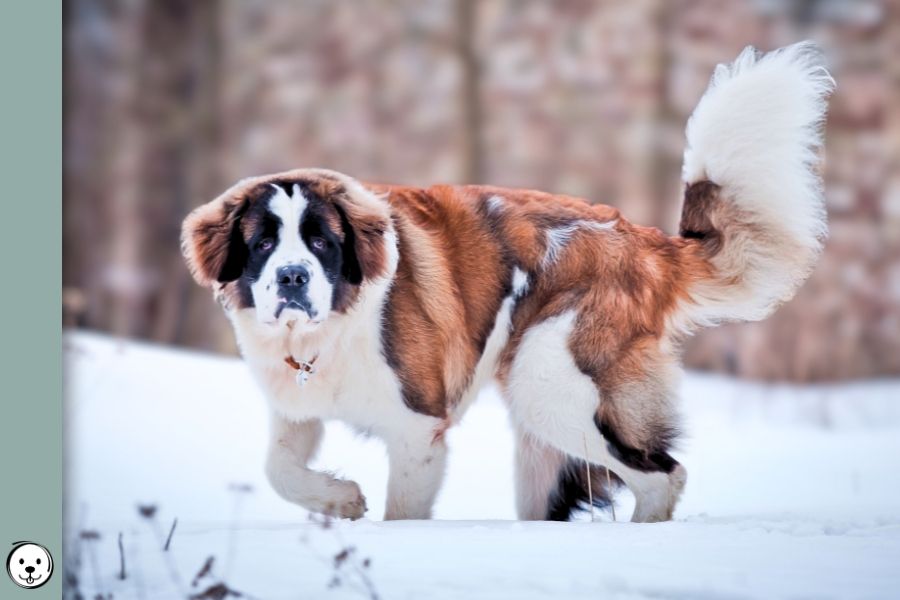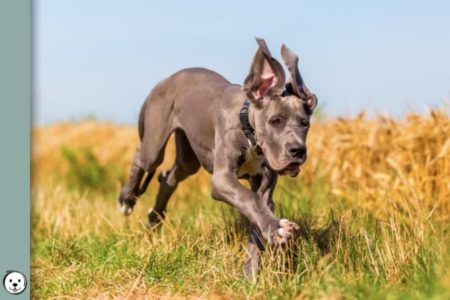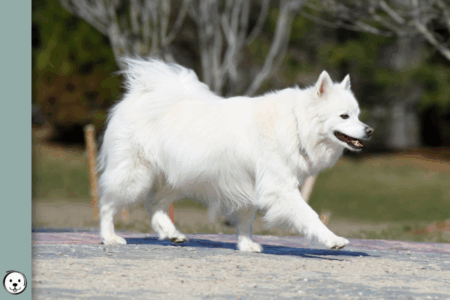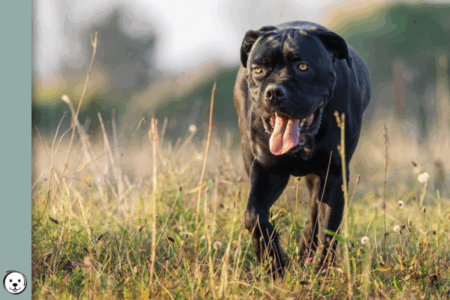Watermarks are only found in sable and white dogs with an extended melanistic mask. It causes the dark sable shading to pool at the edges of the sable patches, creating a striking pattern. However, no one knows what causes watermarkings, also called etching or color pooling.
What Is Watermarking?
Imagine a dog with a sable pattern, a black mask, and some white spotting.
In normal patterns, the white would just cover some of the sable pattern.
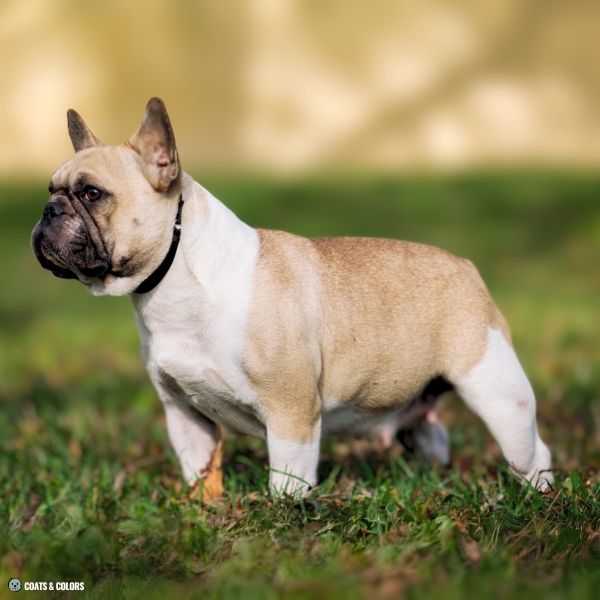
In watermarked dogs, however, the sable shading pools at the outer edges of patterned areas.
Watermarkings can be very faint and only affect some areas of the pattern. But in more extreme cases, they can surround nearly all patches with a dark border.
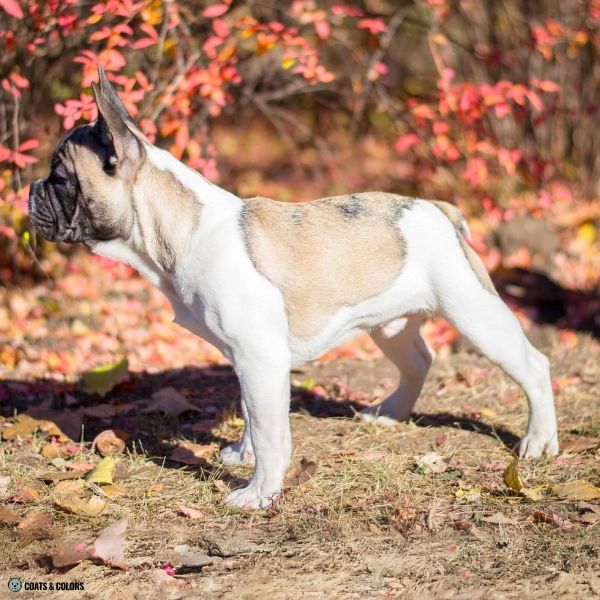
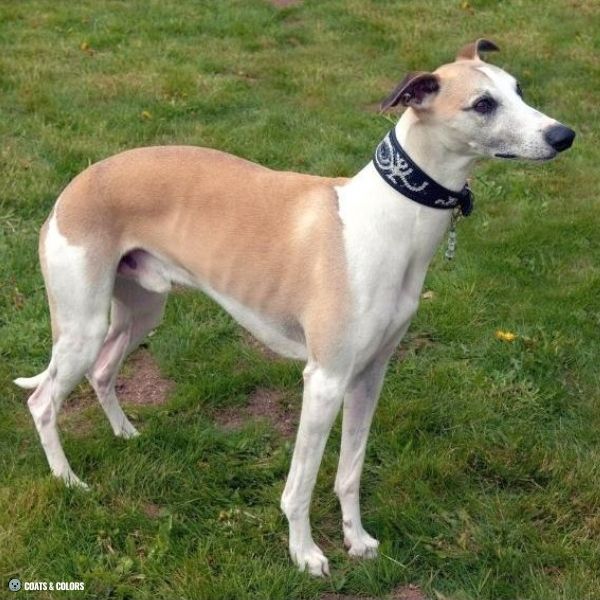
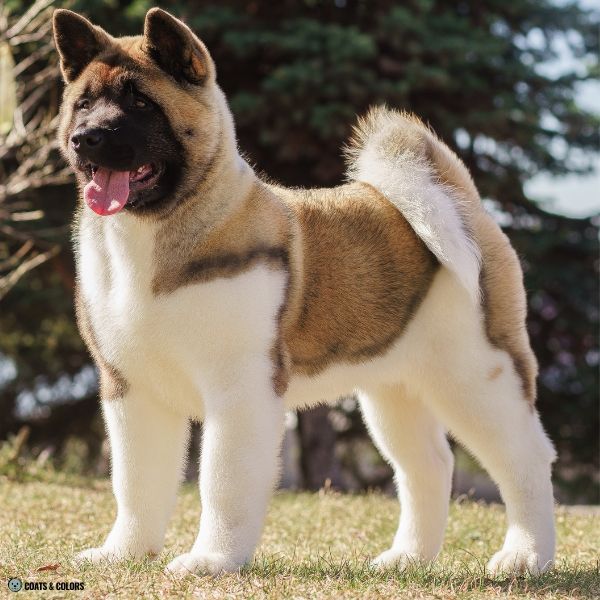
As a side note, this pattern is not unlike what happens with African wild dogs.
Their tan patches also have heavily “framed” black edges:
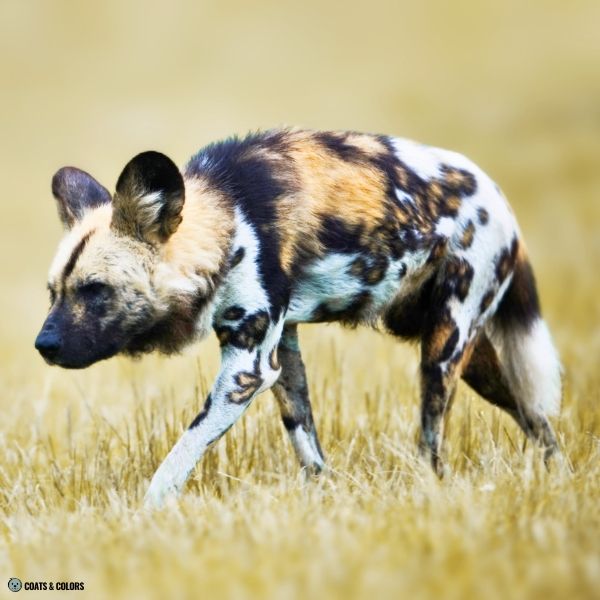
What Causes Watermarking In Dogs?
The modifiers that turn a sable and white into a watermarked dog haven’t been found.
So far, color pooling has only been observed on sable-patterned dogs. Dogs also need some white markings, and at least a somewhat extended mask so that watermarking can happen.
But by far not all dogs with masked sable & white will have etching.

Sable produces a mostly phaeomelanic coat with some amount of black-banded or black-tipped hairs along the dog’s topline. Puppies usually show lots of dark shading which may fade or not.
It’s quite normal for the black shading to recede as a sable dog matures.

Dogs don’t need to have lots of sable shading to have watermarkings.
In fact, watermarking often happens in breeds like Whippets or French Bulldogs, or Saint Bernards which usually come with a rather clear sable pattern and only have shading in their puppy coats.
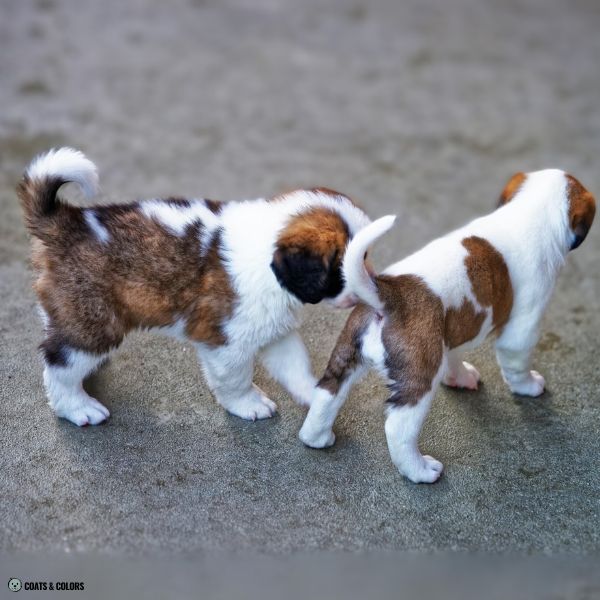
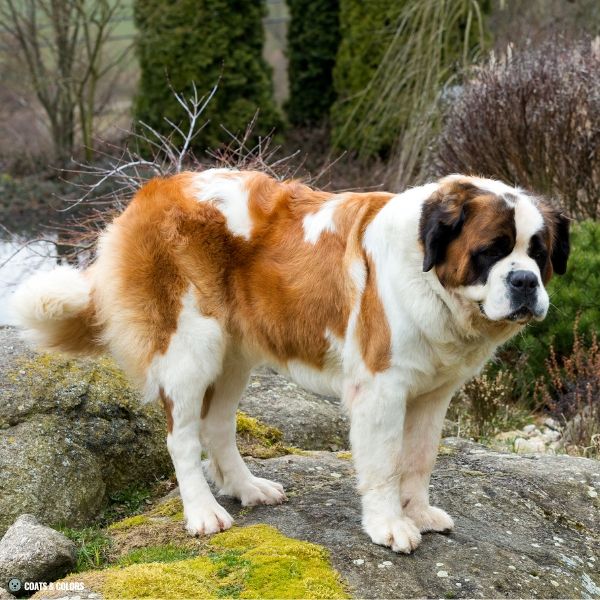
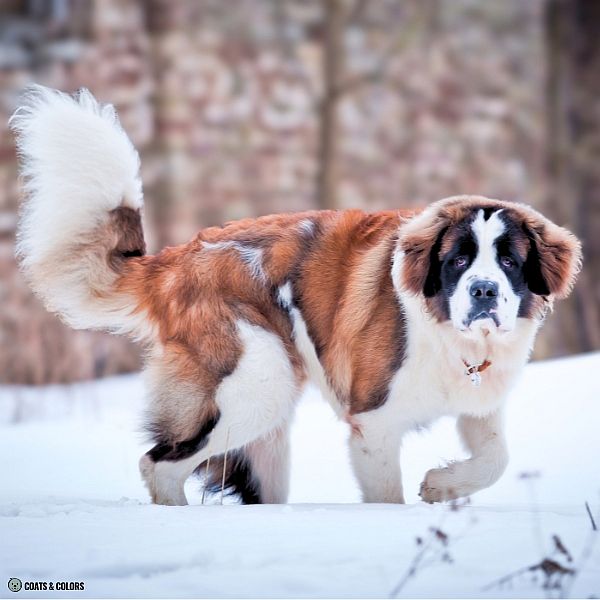
However, some amount of eumelanin is needed for watermarking. In many affected breeds, you regularly get watermarked puppies (since puppies have more shading than adults). But many of these watermarked puppies later clear into a normal sable pattern once their sabling fades.
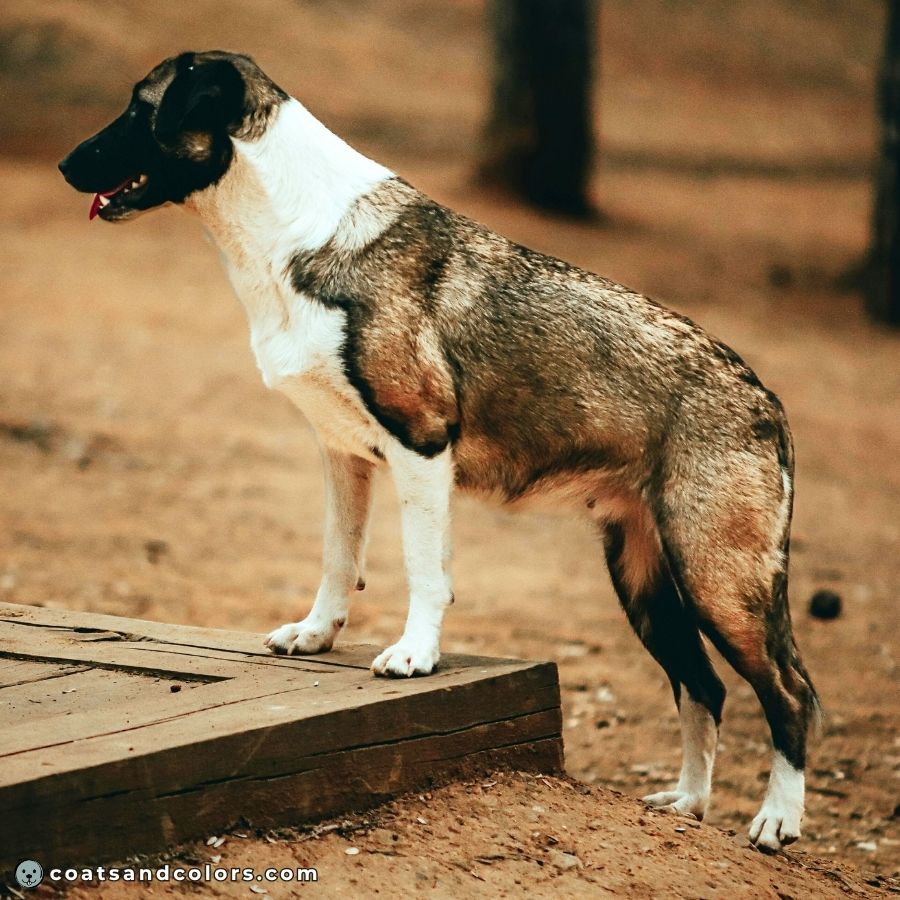
Also, sable shading is more pronounced in longer coat types.
This is because dark hair bands and tips simply can grow longer if individual hairs grow longer. Watermarking can look especially loud in Saint Bernards or American Akitas.
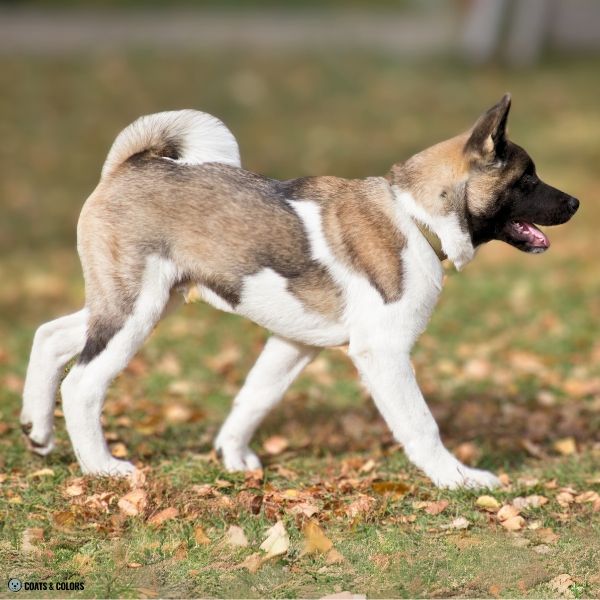

Most examples of watermarking are seen on black-based sables with the occasional blue-based dog.
Watermarking also happens in brindled sable dogs. But is almost impossible to see, because these dogs already have lots of black stripes in their pattern.
And I can’t rule out for sure if watermarking may also happen in other patterns than sable, e.g. in agouti or saddle patterns. Color pooling might just be especially hard to spot in eumelanin-heavy patterns.
The same goes for dogs with brown or lilac pigment or with progressive graying which will fade their watermarkings. Too hard to see against a red background.
Also, heavy masking was mostly bred into black-based patterns where you can actually see the mask. And you can’t get watermarking without a somewhat heavy melanistic mask.
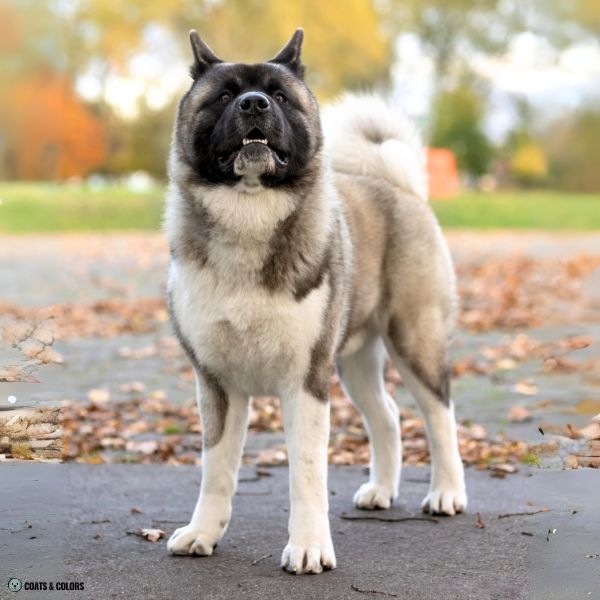
A melanistic mask covers some of the dog’s muzzle in eumelanin. But there are unknown modifiers that can affect mask size. And some breeds of dogs tend to have especially extended masking.
Watermarking seems to be linked to heavy masking.
Dogs with a smallish mask don’t produce watermarkings. Only dogs with at least a larger-than-average mask (covering their eyes and ears in dark hairs) seem to show color pooling.
However, the mask may be not visible in high-white dogs:
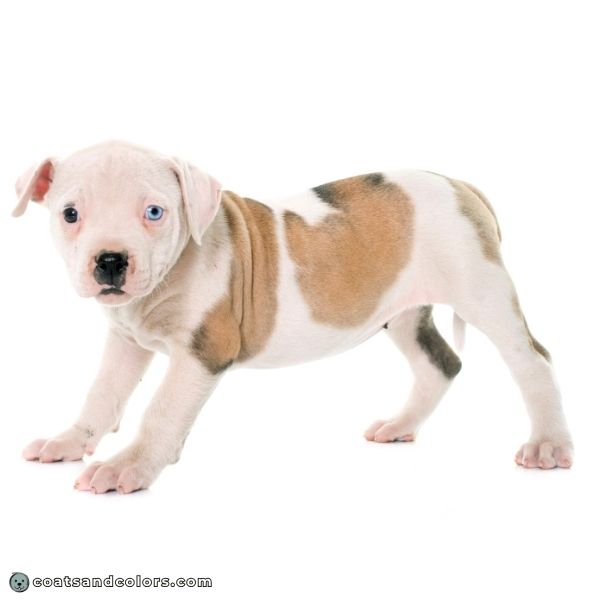
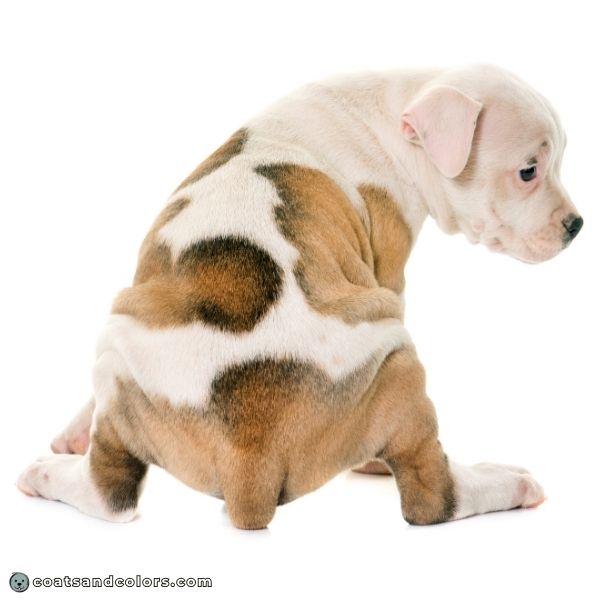
Next, you need white spotting to produce watermarkings!
Many dog breeds where watermarking is common come in piebald and/or whitehead patterns.
And watermarking also has been spotted in Great Danes with a fawnequin pattern, a breed term for sable merle with the harlequin merle modifier. In this case, harlequin deletes merled areas to white.
So it doesn’t seem to matter where the white markings come from in order to create watermarking.
Some seal & white dogs also show color pooling. Seal is a term for a “ghost sable pattern” in dominant black dogs (KB/- Ay/-). Normally, the KB should cause a solid dark coat and hide the A locus pattern.
But some unknown modifier can cause incomplete dominant black. This somehow enables the hidden sable pattern from the A locus to show through anyway (often with a dark dorsal stripe). If masked sable & white can have watermarking, then masked ghost sable & white can have too, it seems.

Some dogs just look like they have watermarking just because their white markings happen to be next to portions of the pattern that would have been black anyway.
It’s not real watermarking if the placement of eumelanin is unrelated to white.


Learn More
Image Credits
© cynoclub/yayimages.com
© Murat IŞIK/pexels.com
© Paul Buijs/pexels.com
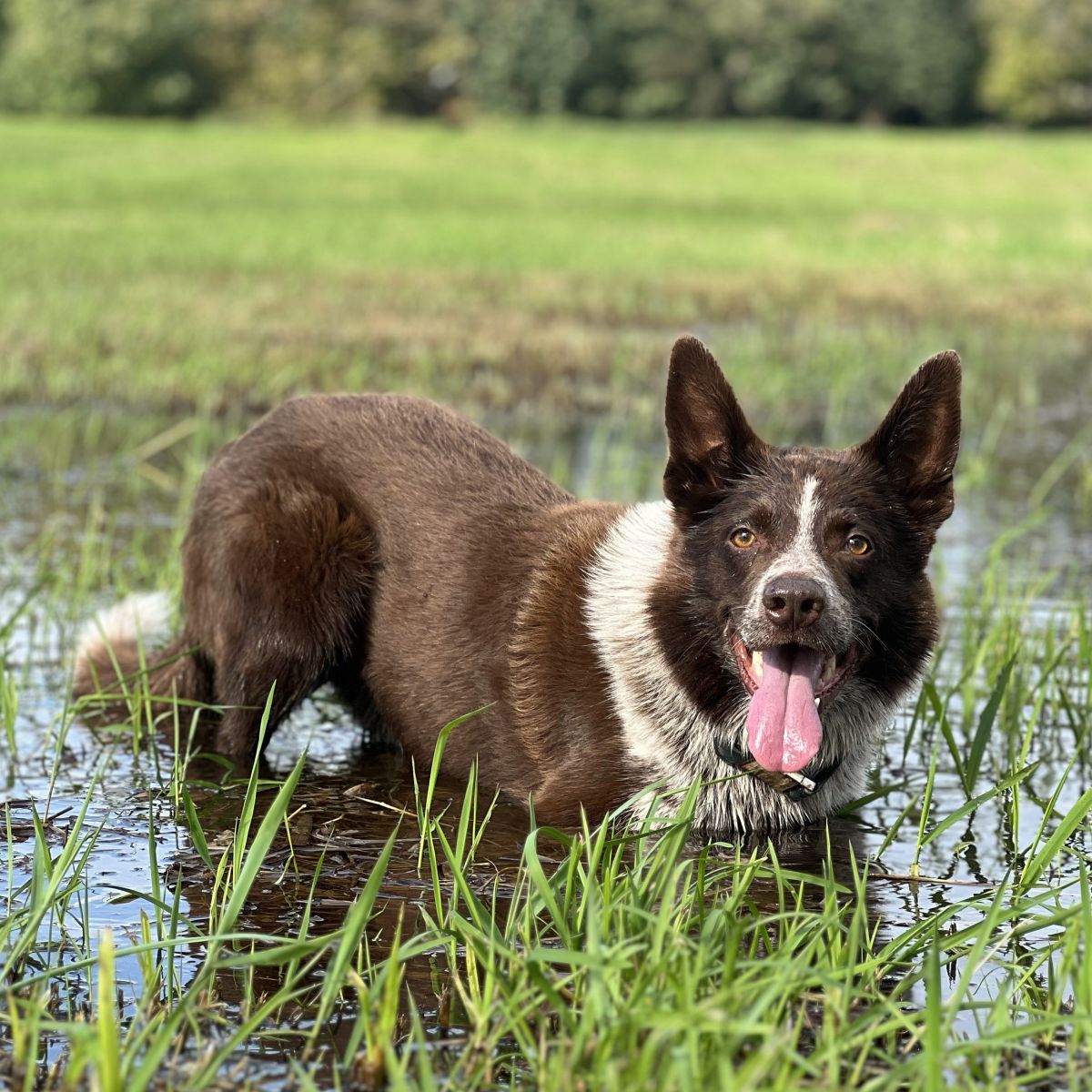
Hi! I’m Steffi. I am a biologist and a big time dog nerd. You are curious about coat color genetics? You’ve come to the right place! Read more.

